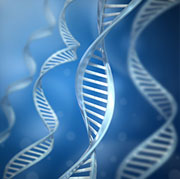- Skip Storing This Everyday Product in the Fridge Door
- Green Tea + B3 Pairing May Boost Brain Health
- Navigating Your Midlife Crisis: Embracing New Possibilities
- City Raccoons Showing Signs of Domestication
- Mapping the Exposome: Science Broadens Focus to Environmental Disease Triggers
- One Week Less on Social Media Linked to Better Mental Health
- Your Brain Changes in Stages as You Age, Study Finds
- Some Suicide Victims Show No Typical Warning Signs, Study Finds
- ByHeart Formula Faces Lawsuits After Babies Sickened With Botulism
- Switch to Vegan Diet Could Cut Your Greenhouse Gas Emissions in Half
Europeans Are Descendants of at Least 3 Ancient Human Groups: Study


Present-day Europeans are the descendants of at least three groups of ancient humans, according to a new study.
Previous research suggested that Europeans descended from indigenous hunter-gatherers and early European farmers. But, a new genetic analysis involving ancient bone samples revealed they are also the descendants of Ancient North Eurasians. Nearly all present-day Europeans have genetic material from this third ancestral group, researchers from Harvard Medical School said.
In conducting its investigation into Europeans’ heritage, the team of researchers collected and sequenced the DNA of more than 2,300 people currently living around the world. They also examined DNA from nine ancient humans from Germany, Luxembourg and Sweden.
The ancient samples were taken from the bones of eight hunter-gatherers who lived about 8,000 years ago, and one farmer who lived about 7,000 years ago.
“Ancient DNA has emerged as a powerful technology that makes it possible to go back in time to understand how people in the past relate to people today,” study co-senior author, David Reich, professor of genetics at Harvard Medical School, said in a university news release.
About 7,500 years ago in Europe, agriculture from the Near East brought early farmers into contact with hunter-gatherers who had been living in Europe for tens of thousands of years. Nearly all Europeans are the result of the mixing of these two ancient populations.
“There was a sharp genetic transition between the hunter-gatherers and the farmers, reflecting a major movement of new people into Europe from the Near East,” noted Reich.
The study’s authors found, however, Ancient North Eurasians also contributed DNA to present-day Europeans. Ancient North Eurasians also likely contributed DNA to people who crossed the Bering Strait into the Americas more than 15,000 years ago, according to the researchers.
“Nearly all Europeans have ancestry from all three ancestral groups,” explained the study’s first author, Iosif Lazaridis, a research fellow in genetics in Reich’s lab.
“Differences between them are due to the relative proportions of ancestry. Northern Europeans have more hunter-gatherer ancestry — up to about 50 percent in Lithuanians — and Southern Europeans have more farmer ancestry,” Lazaridis said in the news release.
Before this paper was published, Reich said, “the models we had for European ancestry were two-way mixtures. We show that there are three groups.”
Lazaridis pointed out that “the Ancient North Eurasian ancestry is proportionally the smallest component everywhere in Europe, never more than 20 percent, but we find it in nearly every European group we’ve studied and also in populations from the Caucasus and Near East. A profound transformation must have taken place in West Eurasia” after farming arrived, he added.
The research published online Sept. 17 in Nature found that Ancient North Eurasians also contributed DNA to Native Americans. “This also explains the recently discovered genetic connection between Europeans and Native Americans,” Reich said.
Meanwhile, ancient Near Eastern farmers and their European descendants can trace much of their ancestry back even further to an older lineage called the Basal Eurasians, the study authors pointed out in the news release.
“This deep lineage of non-African ancestry branched off before all the other non-Africans branched off from one another,” Reich said. “Before Australian Aborigines and New Guineans and South Indians and Native Americans and other indigenous hunter-gatherers split, they split from Basal Eurasians. This reconciled some contradictory pieces of information for us.”
Looking ahead, the researchers plan to investigate when the Ancient North Eurasians arrived in Europe. They also want to find ancient DNA from the Basal Eurasians.
“There are important open questions about how the present-day people of the world got to where they are,” said Reich. “The traditional way geneticists study this is by analyzing present-day people, but this is very hard because present-day people reflect many layers of mixture and migration.”
More information
The U.S. National Library of Medicine has more about genetic ancestry testing.
Source: HealthDay
Copyright © 2025 HealthDay. All rights reserved.










